MusicRadar Verdict
A reissue that still looks futuristic. With tones that are better than you'd think, it's crystal clear that this is a rock rhythm monster.
Pros
- +
Still is a strikingly original guitar. Surprisingly good bump 'n' grind rock tones.
Cons
- -
Weighty. Limited sound options. A little hard to keep in tune.
MusicRadar's got your back
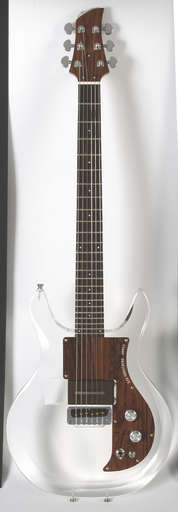
Ampeg Dan Armstrong ADA6
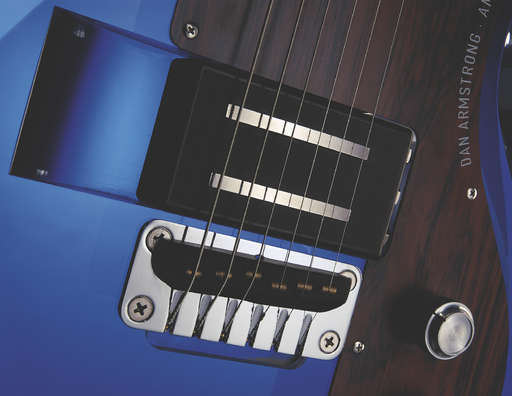
Ampeg Dan Armstrong ADA6
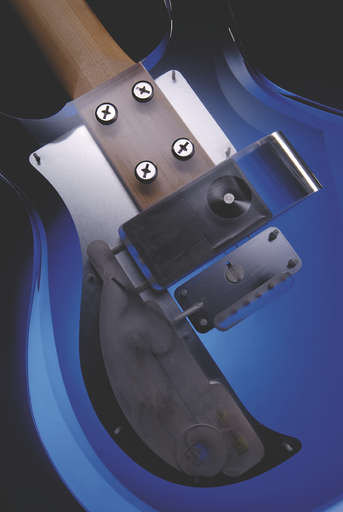
Ampeg Dan Armstrong ADA6
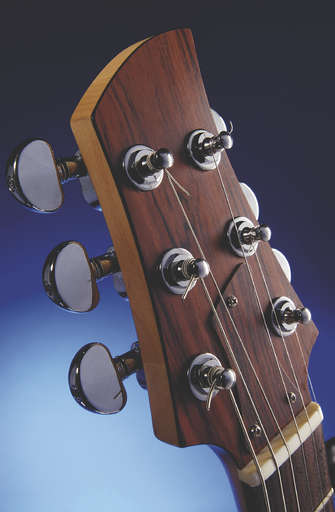
Ampeg Dan Armstrong ADA6
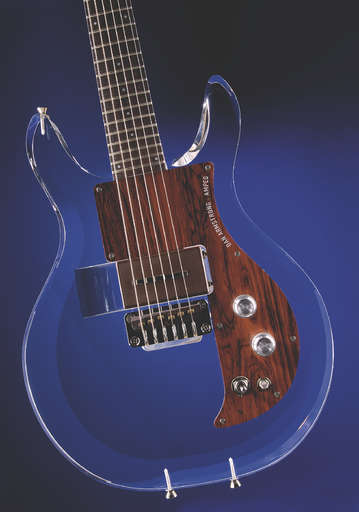
Ampeg Dan Armstrong ADA6
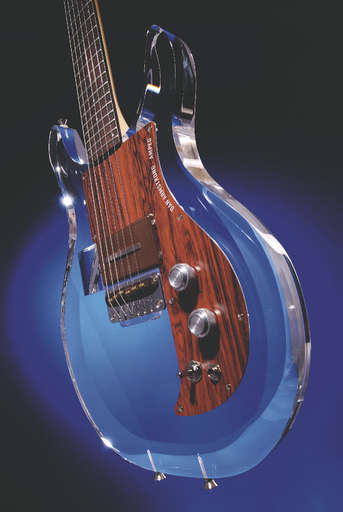
Ampeg Dan Armstrong ADA6
Despite a brief production period (1969 to 1971), the Ampeg Dan Armstrong has inspired an A-list of rockers, old and new, from Keith Richards to Justin Hawkins and Dave Grohl.
Over the years Ampeg have sporadically released reissues of the famous instrument and this is the 2006 vintage.
Hands on
Whether or not it's the fact that guitar design has moved on very little since 1969, the 2006 'See Through' just doesn't seem to have aged.
It still looks futuristic and a little gimmicky, although there's a precision to this reissue that was lacking from the originals.
The clear plastic body is thinner - around 32mm - than a standard wooden solidbody but it remains a heavy guitar.
Dan Armstrong is quoted as saying: "My intention was to make a guitar that sustained extremely well. Plastic was obviously one good material for the body because of its rigidity."
Elsewhere he has said he wanted it to be, "totally electric - an un-banjo so as not to ever resemble any guitar or banjo of the past".
Want all the hottest music and gear news, reviews, deals, features and more, direct to your inbox? Sign up here.
The proper name for the clear plastic used is polymethyl methacrylate (PMMA), commonly known as acrylic and available with different brand-names: Plexiglas, Lucite and Perspex.
It was developed back in 1928 and brought to market in 1933 by the German Company Rohm and Haas. So there.
The strapped-on balance of the 'See Through' feels very centred and, weight aside, it's not uncomfortable.
It's a very cool shape with those symmetrical horns, elegant waist and its SG-like edge chamfering around the quite rounded lower bouts thinning out towards those horns.
Be aware, however, that the top edge is quite sharp and, depending on how you play, it could easily scrape the skin off the underside of your forearm.
The dual body strap-buttons are designed to allow the guitar to stand upright when leant against an amp and give optional strap anchorage.
This was a pretty unique idea in 1969 and you'll find the technique borrowed by a few makers today, most notably Tom Anderson.
Another 'See Through' innovation was the 24-fret rosewood fingerboard that sits clear of the body - it was one of the first guitars, bolt-on or otherwise, with this feature.
To achieve this the maple neck is extended some 90mm under the metal-backed Formica pickguard - where a neck pickup would be - and is then bolted to the body with four chunky bolts that screw into nuts inlaid into the face of this maple 'tongue'.
On the originals the bolts were reversed - the bolt head was under the pickguard and threaded into a domed and chromed nut on the back of the body.
"The original design had tuning stability issues," explains Ampeg's Paul Meisenzahl. "The use of rather large bolt nuts to secure the neck to the body meant that a substantial amount of wood had to be removed from the 'tongue' of the neck.
"That's why we've changed the neck joint. We think that tuning stability has been significantly improved, as there's more mass to the 'tongue' of the neck. And, in addition, it's now easier to remove the neck for any potential service-related procedures."
Ampeg has used a three-piece laminate construction but, not least due to the unsupported length of the neck, it's a little 'whippy'.
It doesn't help tuning stability and quite possibly reduces sustain. And despite the full two-octaves clear of the body, access is a little tight.
Although there's a chamfer on the back of the treble horn to give a little more hand space, it only works if you strap the guitar quite high - not a very rock 'n' roll position!
The actual neck shape, a quite chunky C shape (21.6 at the first fret, 22.6 at the 12th), feels very good, while the fretting, from a quite wide and low-ish wire, is very tidy and the small dot inlays are visible and clear.
From the relative conformity of the neck, it's the pickup and electronics that still separate the 'See Through' from any other mainstream electric.
The master volume and master tone, plus the three-way 'tone selector' and output jack, are all mounted on the pickguard in a Fender-like fashion for easy assembly.
But the large pickup can be slid in and out without slackening the strings thanks to that large 'ski-slope' cut-out on the bass side of the low E.
You unscrew a small thumbscrew on the rear and pull the pickup away from the two banana plugs that connect it to the guitar's circuitry.
Why? Originally six different pickups were offered (a seventh humbucking pickup followed soon after), and the idea was that you could change tonality and character by simply swapping pickups.
Today we just get two: the single-coil Rock Treble and the humbucking Sustain Treble.
Each pickup is potted into a large rectangle chocolate-coloured plastic cover leaving just the single or dual blade pole piece visible.
The three-way tone switch works slightly differently to the original (and even that changed function in 1971) but is the same as that offered on other recent reissues. In the centre position the tone control is bypassed.
In the forward position, the tone control acts in a conventional way and in the rear position, thanks to a different capacitor, the roll-off is different, resulting in a darker sound when the tone control is turned down.
The bridge again closely replicates the original and clearly is inspired by the Danelectro bridge - Dan Armstrong had spent some time from the mid-60s modifying guitars from his New York store, many of which were obsolete Danelectros.
Here, however, more accurate intonation is achieved with brass saddles set into the rosewood bridge.
That said setting intonation is tricky, not to mention string height and although we restrung the 'See Through' with 0.010s, and were pleasantly surprised to find the majority of strings perfectly in, it's still a crude design.
"This raises the question of how true to the original a 'reissue' should be," ponders Meisenzahl. "On one hand originality is important but at the same time we've learned a lot about how to improve an instrument since the 60s.
"In the seventies it wasn't uncommon for players to modify these instruments using a Strat-style hardtail bridge. And we know that implementing a tune-o-matic would require a significant change in the neck angle.
"I've detected a change in the sound of the instruments that I've encountered with these mods. We think that, although crude, the rosewood bridge is a contributing component to the sound of the guitar, so we've opted to stay somewhat true to the original."
Sounds
Unlike a wooden-bodied electric, by design, the Armstrong's body is merely a reflective plate to the strings' vibration.
It allows excellent sustain but with none of the colouration - woodiness, if you like - of a conventional body. Acoustic volume is therefore slight.
The neck, however, does provide some tonal depth though it must be said that unplugged the 'See Through' is less than inspiring. But plug in and things begin to make sense.
Using the Sustain Treble humbucker, there's bags of hum-free output and with the tone switch centralised there's a sharp Tele-like high-end that distorts really well - it's a high-octane rock sound that suits big riffs and power chords.
Perhaps because of the relatively low height frets, which don't give the guitar as fluid a playability as you'd expect, it really does seem like a perfectly intended rhythm monster.
The Rock Treble is equally fierce with an extra P-90-like edginess (and hum pickup).
The tone switch actually makes sense to damp down some of these highs - especially sweet for slide solos where the 'See Through' excels with its inherently smooth, seemingly compressed, sustain.
Clean, too, the 'See Through' doesn't disappoint - especially with a row of stompboxes, where the clarity and strident tone makes for big, rich arpeggios.
But whether it's that bridge or the long neck, tuning stability wasn't as good as we'd hoped.
In a hot rehearsal room it drifted compared to our Singlecut and Stratocaster. In a recording studio it sounded fine but slipped out of tune during a live take.
Summary
Dan Armstrong's vision is a perfect example of the highly experimental time of the late-60s and 70s.
It's a classic guitar by association rather than tonality or playability but it does have a unique voice, not to mention appearance.
If you can live with the weight there's definitely something quite inspiring about the instrument - a polar opposite of a lightweight ash Stratocaster.
It's not over-priced but you can buy a lot of more versatile, conventional instruments for the same money.
In addition, the tuning issues that we encountered, though minor, do concern us. The model we looked at was a pre-production model so hopefully Ampeg sorted this for the final version.
But for those of us that 'get it', the 'See Through' remains a truly unique and highly recognisable instrument.
Let's hope it sticks around and once again contributes to some classic rock 'n' roll moments.
Guitarist is the longest established UK guitar magazine, offering gear reviews, artist interviews, techniques lessons and loads more, in print, on tablet and on smartphones
Digital: http://bit.ly/GuitaristiOS
If you love guitars, you'll love Guitarist. Find us in print, on Newsstand for iPad, iPhone and other digital readers
